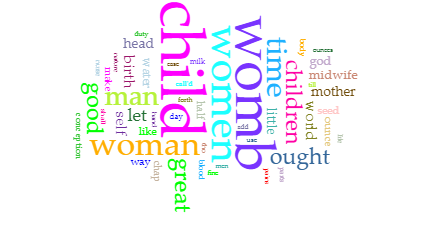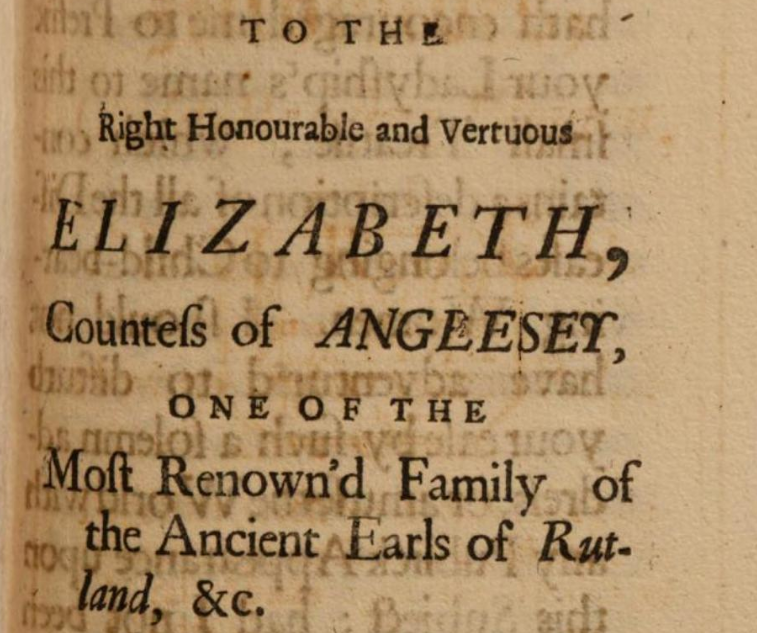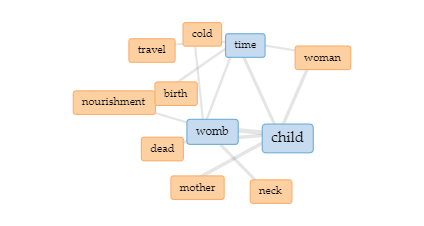A companion for midwives, child-bearing women
| Title | A companion for midwives, child-bearing women |
|---|---|
| Contributor(s) |
Barret, Robert
(author) |
| Year | 1699 |

This is a visualisation taken from Voyant Tools which shows the most common words and concerns of this text and how it pertains to the female body. We can see some of the roles women occupy in this text, both as patient (‘woman’/’women’) and healer (‘midwife’). ‘God’ is also invoked with relative frequency. The womb continues to be an important subject in our corpus.
Not much is known about the author of this source, who is described as a “Brother of Surgeons-Hall in London” in the title page of this work. In the address, the text is dedicated to the Countess of Anglesey who Barret acknowledges as being influential in his writing. He claims his work will address all of the diseases that women are susceptible to during and after pregnancy, identifying the target audience of this text. He also acknowledges the societal pressures behind bringing this text to print, citing “the Censorious and Ungrateful temper of the Age we now live in” (Barret, 1699, p. vi) as a barrier to aiding women in their medical needs.


Voyant Tools describes that this Collocates Graph represents “keywords and terms that occur in close proximity as a force directed network graph”. Keywords (‘time’, ‘womb’ and ‘child’ are in blue while the words that are in proximity are in orange.) In A Companion, Barret describes the womb across two key axes: as an aspect of the female body ; humoural (‘cold’) and physical (‘neck’) and as a part of the body that serves a role (‘nourishment’) and (‘child’).
Consult the 1699 edition
We consulted one version of this text, the 1699 transcribed edition hosted by the University of Michigan, which also served as our .txt data file source. While there are two other 1699 editions of this work hosted by Google Books and the Internet Archive, we did not use this version for this research and thus there may be differences between the text file and the printed texts such as discrepancies in page numbers that we do not account for here.




